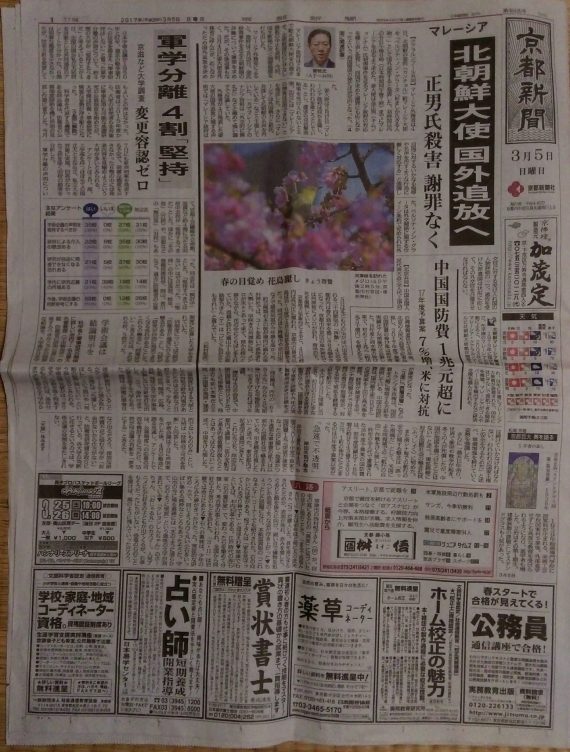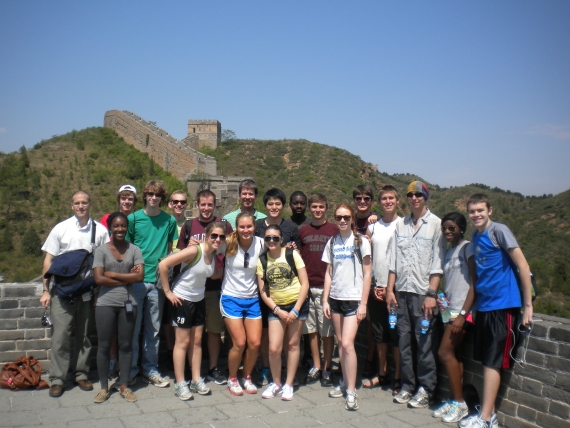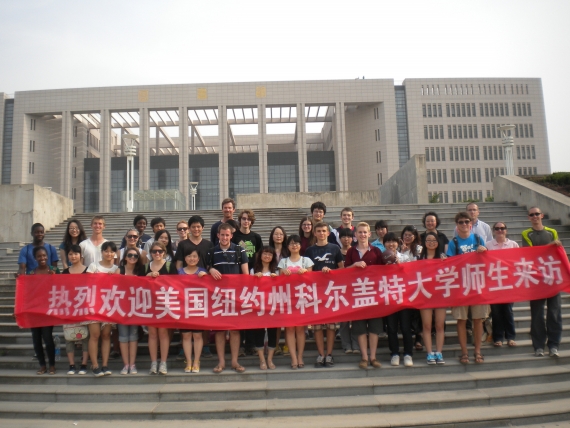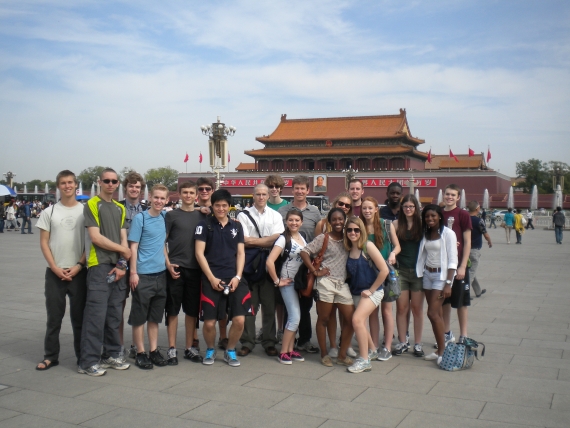
Week 6 Prompt: McDonalds
MCDONALD’S — Few global brands are as recognizable as McDonald’s. According to its website, the McDonald’s corporation operates or has franchised some 36,000 restaurants in 100 countries and employs 1.8 million workers worldwide. Its prevalence has spawned unsurprising imitations—for instance, “McDonal” stores in Iraqi Kurdistan emulate both the appearance and menu of McDonald’s. But ubiquity also necessitates critique. To some analysts, “McDonaldization” exemplifies the homogenization of global culture, a visible (if not vestigial) sign of American-style consumerism spreading throughout the world. This week, photograph the McDonald’s location nearest where you live, if there is one, then answer a few basic questions: What kind of people do you see inside—tourists, locals? Is it busy? Is there any attempt to emulate local culture, traditions, or heritage on the menu? Have you eaten there? Explain why or why not.
Danielle Norgren
I am a person of principle. One of these many principles includes avoiding McDonalds at all costs when abroad. Its glaring yellow arches are an enticing promise of comfort; step through the sliding glass doors and suddenly, I will be able to speak the universal language of fast food. In some cases, speaking won’t even be necessary: touch screens have replaced all human interaction. Thus, in countries such as Hungary or Austria, where I do not speak the language, McDonald’s represents a welcome escape from wild hand gestures and new customs. Up until this year, I have stubbornly refused to accept the comfort that McDonald’s offers. Being abroad, I have assured myself, is an exercise in embracing discomfort.
It is with great reluctance, therefore, that I reflect upon the fact that I have been to McDonald’s four times in the past two months. Each of these times, I have justified the excursions as being out of necessity. Arriving in a train station at 11pm in Florence, for example, meant no other restaurants were available. In Geneva, living on a student budget means I must cross the border to France for groceries. One particularly misplanned week, I realized I was out of groceries an hour before our evening class. McDonald’s seemed to be the only option.
Geneva is an international city. It is therefore hardly surprising that during my visit to McDonald’s I was surrounded by the usual cacophony of four languages being spoken at once. Particularly impressive, though, were the workers and their abilities to switch with ease between languages. Men in business suits, high schoolers with cellphones, and families with strollers, crammed into the entryway. Sitting in the upstairs booths overlooking the train station, my friend and I discussed Michelin-starred restaurants and the show Chef’s Table over our french fries.
My time in Geneva and experiences at Mcdonald’s have also greatly increased my appreciation for American fast-food prices. While I have overcome my urge to visually grimace as I glance at the cost of my meal (Usually around 15 Francs), I am comforted by the familiarity of options. McFlurry, it turns out, seems to be a universal term (or at least in Western Europe).

Danielle’s photo is from https://us.123rf.com/450wm/TEA/TEA1602/TEA160201311/53272655-geneva-switzerland–november-19-2015-mcdonald-s-restaurant-interior-mcdonald-s-is-the-world-s-larges.jpg
Ben Kelsey
The McDonalds pictured is one on a main street-corner close to a very pretty temple.

From my admittedly little experience with McDonalds in Japan, it seems to be mostly frequented by locals, but the cashiers are quick to pull out English menus for foreigners, so I would guess that tourists frequent them fairly often. The McDonalds nearest me is quite busy for its small size during lunch times. The seating area is perhaps two meters wide, enough to accommodate a two-person table and a narrow passageway, and there is also a counter along the outer wall for single-person seating. There is also a small sealed-off smoking room, but it was empty when I went.
The two most noticeable concessions to Japanese food culture in Japan are the teriyaki burger, which I have not tried, but I have heard that it’s okay, and the presentation of the food. Presentation is extremely important in all areas of consumerism in Japan, and the most striking part of a dining experience at a Japanese McDonalds is, in my opinion, that the burgers that one receives actually look like they do in the pictures on the menu, and they come wrapped in greaseproof paper in a little basket. It’s all very attractive. Of course, the cashiers are also as friendly and cheerful as all service staff are in Japan, and welcome customers as they enter and thank them as they leave. It’s sort of a strange experience, to be eating a fast-food burger in that kind of atmosphere.
I have eaten at a McDonalds here once, as much for the experience as for the food. If I recall correctly, I had a chili burger and an iced oolong tea. It was, I would estimate, better than the average McDonalds food in the U.S., but still far below the very high standard of restaurant food in Japan. It was also more expensive than fast food in the U.S., but still cheap relative to other common lunch options. Overall it was a pleasant experience, but one I would probably not repeat unless pressed for time and unable to make it to a convenience store (or konbini, which have an excellent selection of inexpensive ready-made food items). I am perhaps, however, biased by my Americanized taste, and it is possible that I prefer konbini food because it is more novel to me, and perhaps McDonalds is a more interesting experience for the average Japanese diner. Although, to be fair, I don’t think I’ve eaten at a McDonalds in the U.S. in over 9 years, so maybe I’m not the best judge of equivalencies.
Sabrina Farmer
I am sad to say that during my time in South Africa, I never made it to a McDonald’s and I honestly cannot recall seeing one. This may be because I was not looking for them or because of the dominance of other restaurant chains in South Africa. The most prominent restaurant chain I saw was Steers, a South African fast food chain which primarily serves burgers and chips. The chain began in the 1960s after a South African man was inspired by his observation of the budding fast food business during a visit to the United States. I visited Steers restaurants on visits to shopping malls and during travel days where they are found in conjunction with highway gas stations. They tend to be busy, have a consistent menu, and are similar to that of a McDonalds. The steers encompass some of the tradition of the famous South African braai. Braai nights were my favorite South African tradition, where families and friends get together each week to cook out, in a similar format as a BBQ but so much more. At Steers, there is a theme of items being flame-grilled and they even offer items such as ribs. The Steers chain has spread across Africa and is continuing to spread, the first one located in a non-African country appeared in 2013.

























 Yesterday, as I sat in a movie theater in Madrid, memories of my trip to China with the Benton Scholars Program after my freshman year came flooding back to me. Now, it may seem a bit odd that I would be sitting in a theater in Madrid contemplating such a travel but I assure you there was a reason. The new James Bond movie, Skyfall, has several scenes that take place in Shanghai, China. Upon seeing the skyline on screen I knew immediate where the scenes were shot, and I began to reminisce on the wonderful time in my life when I went to, what felt like, the corner of the earth.
Yesterday, as I sat in a movie theater in Madrid, memories of my trip to China with the Benton Scholars Program after my freshman year came flooding back to me. Now, it may seem a bit odd that I would be sitting in a theater in Madrid contemplating such a travel but I assure you there was a reason. The new James Bond movie, Skyfall, has several scenes that take place in Shanghai, China. Upon seeing the skyline on screen I knew immediate where the scenes were shot, and I began to reminisce on the wonderful time in my life when I went to, what felt like, the corner of the earth.
